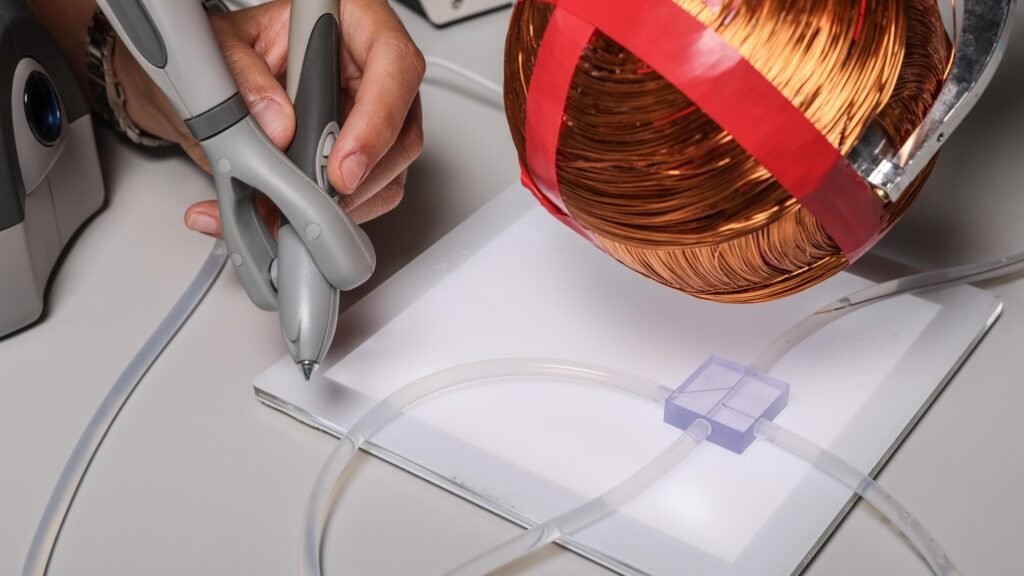A team at the École Polytechnique Fédérale de Lausanne (EPFL) has introduced MagFlow, an ultraminiaturized neurovascular microcatheter designed to reach the smallest and most complex blood vessels in the human body. Unlike conventional catheters that rely on guidewires and manual manipulation, MagFlow uses the kinetic energy of blood flow and magnetic steering to navigate arteries as narrow as 150 microns—roughly the width of a human hair. This innovation could revolutionize how clinicians deliver targeted therapies to previously inaccessible regions of the brain and body.
Traditional microcatheters are limited by size and maneuverability. Interventional neuroradiologists typically use a push-pull-torque technique to guide these devices, which can be time-consuming and risky for delicate vessel walls. MagFlow eliminates these constraints by adopting a flat, ribbon-like design with a magnetic tip. The catheter is constructed from two bonded polymer sheets that inflate like a fireman’s hose, allowing it to deliver both thin and viscous biomedical fluids.
To steer the device, EPFL developed OmniMag, a robotic platform that uses a magnetic field generator mounted on a robotic arm. Clinicians control the system with a stylus, and OmniMag calculates the precise magnetic orientation needed to direct MagFlow’s tip. This setup enables rapid and precise navigation through highly branched vascular networks.
In preclinical trials conducted in Paris, researchers successfully catheterized narrow and curved arteries in the head, neck, and spine of pigs. They delivered contrast agents and embolizing materials safely and efficiently, demonstrating the device’s potential for treating hemorrhagic stroke, arteriovenous malformations, and pediatric cancers.
Here’s a video presentation that explains more:
Article from EPFL: Microcatheter delivers therapies to the tiniest blood vessels
Abstract in Science Robotics: Flow-driven magnetic microcatheter for superselective arterial embolization

